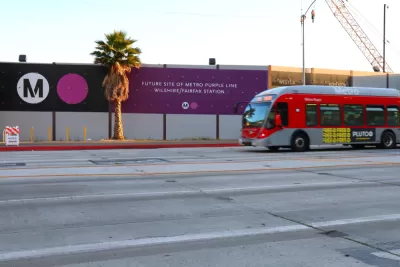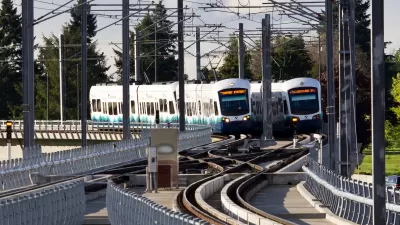The Eno Center for Transportation launched the first institutional investigation of the cost of transit projects earlier this year and recently released its initial findings, with promises for more in-depth case studies to come.

The Eno Center for Transportation released the first product of an initiative launched in late 2019 to study the high cost of public transit projects in the United States, building on the momentum of new public and media attention to the problems of transit construction.
The initial public offering is a database of transit capital construction projects, including "construction cost and timeline data for a total of 171 domestic and international rail transit projects completed over the past 20 years," according to an article on the Eno website that shares insights into the database. "For each project, factors such as number of stations, grade alignment, station spacing, and mode allow for deeper comparisons."
The article lists five key takeaways from the new database:
- Light rail is not necessarily cheaper than heavy rail. Grade alignment, rather than mode, is the major determinant of cost.
- Many rail projects in the United States are relatively inexpensive
- The United States pays a premium for tunneled projects
- Cost variability increases significantly for tunneled projects
- Stations are expensive, but international projects include more of them
More details for each of those takeaways are included in the source article, as well as promises for further research.
FULL STORY: FIVE TAKEAWAYS FROM ENO’S TRANSIT CAPITAL CONSTRUCTION DATABASE

Manufactured Crisis: Losing the Nation’s Largest Source of Unsubsidized Affordable Housing
Manufactured housing communities have long been an affordable housing option for millions of people living in the U.S., but that affordability is disappearing rapidly. How did we get here?

Americans May Be Stuck — But Why?
Americans are moving a lot less than they once did, and that is a problem. While Yoni Applebaum, in his highly-publicized article Stuck, gets the reasons badly wrong, it's still important to ask: why are we moving so much less than before?

Using Old Oil and Gas Wells for Green Energy Storage
Penn State researchers have found that repurposing abandoned oil and gas wells for geothermal-assisted compressed-air energy storage can boost efficiency, reduce environmental risks, and support clean energy and job transitions.

Minneapolis Bans Rent-Setting Software
Four cities have enacted restrictions on algorithmic software that can inflate rent costs.

Oakland to Add 244 New EV Chargers
Oakland plans to launch its new charging network at eight locations by the end of 2025.

Jane Goodall Inspires with Message of Hope, Resilience, and Environmental Action
Speaking in Pasadena, Jane Goodall offered a hopeful and inspirational message, urging global compassion, environmental responsibility, and the power of individual action to shape a better future.
Urban Design for Planners 1: Software Tools
This six-course series explores essential urban design concepts using open source software and equips planners with the tools they need to participate fully in the urban design process.
Planning for Universal Design
Learn the tools for implementing Universal Design in planning regulations.
Heyer Gruel & Associates PA
City of Moreno Valley
Institute for Housing and Urban Development Studies (IHS)
City of Grandview
Harvard GSD Executive Education
Salt Lake City
NYU Wagner Graduate School of Public Service
City of Cambridge, Maryland





























